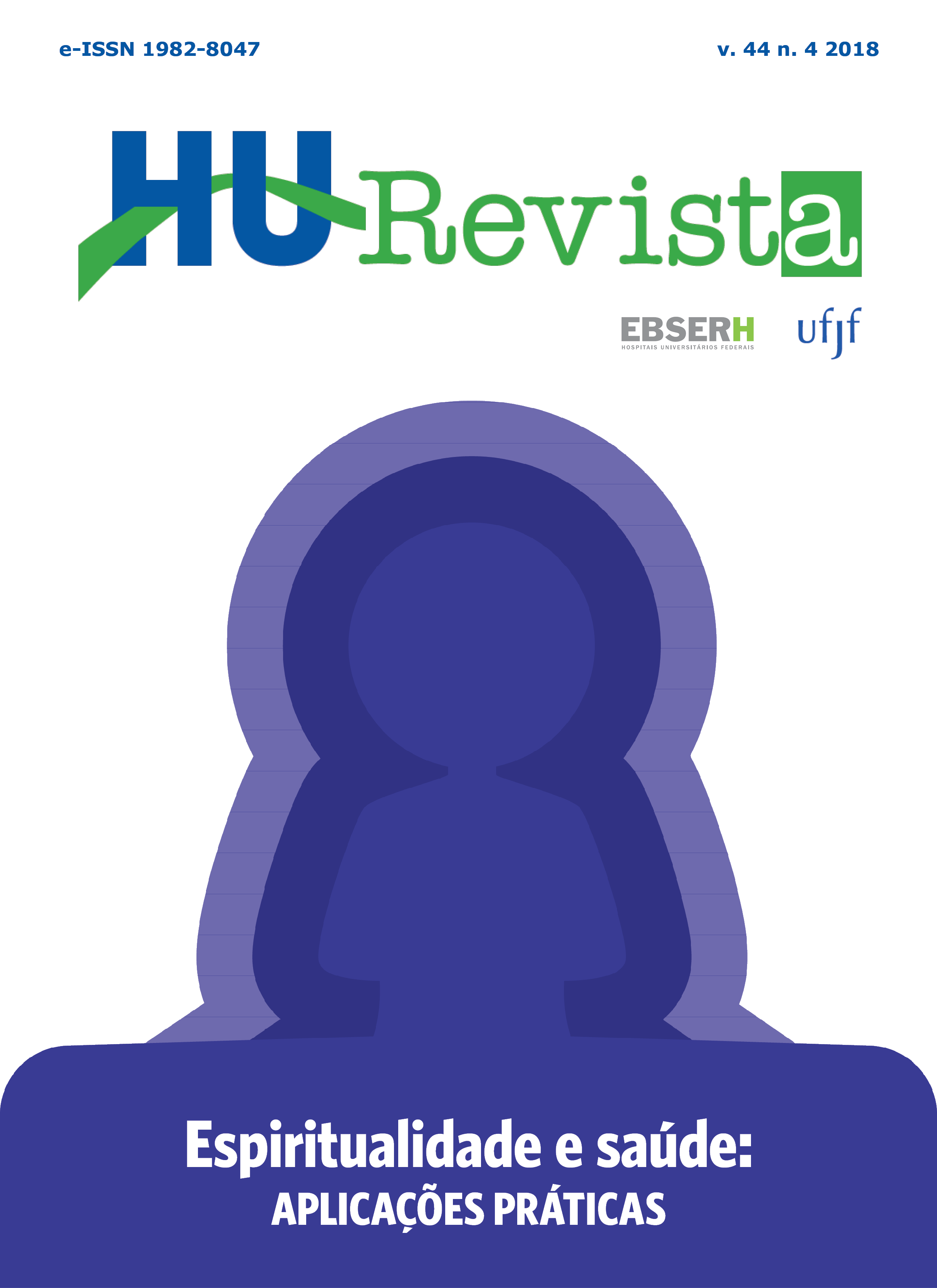Relations between spirituality / religiosity and psychiatry in Brazil
Bases teóricas
DOI:
https://doi.org/10.34019/1982-8047.2018.v44.28189Keywords:
spirituality/religiosity, brazilian psychiatry, relations, historicalAbstract
The relations between spirituality / religiosity and psychiatry in Brazil went through different moments. Reports are fragmented and distributed across multiple sources. In a narrative review this article aims to provide an overview of the protagonists and key facts of each stage from the 19th century to the present day. The appointment of Juliano Moreira, in 1903, to the direction of the Alienados National Hospital (Rio de Janeiro/RJ) is the initial milestone of Brazilian scientific psychiatry. The background is the Positivist view of the world and human being, with the expectation that science would supersede all religious and metaphysical beliefs. The vigor of Modernity had to weaken for another understanding to emerge. In the last decades of the 20th century, psychiatrists receptive to the theme of beliefs were able to open spaces in professional associations to discuss spirituality and not until the 1990s did national research in psychiatry begin to include spirituality. Since then, the body of evidence has grown rapidly but consistently. Worldwide - and in less than three decades - Brazil is already among the five countries with the highest number of publications on spirituality/religiosity and mental health, with the potential to remain in a prominent position, as it has a highly religious population, while emerges a new generation of researchers engaged in the theme.
Downloads
References
2. Oda AMGR, Dalgalarrondo P. Juliano Moreira: um psiquiatra negro frente ao racismo científico. Revista Brasileira de Psiquiatria. 2000: 22(4), 178-9.
3. Carvalhal LA. Loucura e Sociedade: o pensamento de Juliano Moreira (1903-1930) [monografia de bacharelado em História]. Rio de Janeiro: Universidade Federal do Rio de Janeiro; 1997.
4. Passos A. Juliano Moreira (vida e obra). Rio de Janeiro: Livraria São José; 1975.
5. Gabriel Figueiredo As origens da assistência psiquiátrica no Brasil: o papel das Santas Casas. Rev. Bras. Psiquiatr. vol.22 n.3 São Paulo Sept. 2000.
6. Coelho RS. Primeira unidade psiquiátrica em hospital-geral no Brasil. Revista do Instituto Histórico e Geográfico de São João del-Rei, p. 4-9, 1973.
7. Gonçalves AM, Goulart MSB. História das Santas Casas na Assistência à Saúde Mental mineira no século XIX. Tempos Gerais - Revista de Ciências Sociais e História – UFSJ, Número #2 – 2015, pp. 04-26.
8. Piccinini WJ. História da Psiquiatria. Psychiatry On-line Brazil, 2004: 9 (2).
9. Ribeiro B. Protestantismo e cultura brasileira. São Paulo: Casa Editora Presbiteriana, 1981.
10. Câmara FP. Pré-história da psicoterapia brasileira: a chegada do magnetismo animal no Brasil, 1823-1887. Debates em Psiquiatria, 3(3), 2013, 34-38.
11. https://espiritismonomundo.wordpress.com/hospitais-psiquiatricos-espiritas-no-mundo/ Consulta em 21.08.2019.
12. Noronha M. Terapia social. Florianópolis: Letras Contemporâneas, 2007, 200p.
13. www.cppc.org.br / Consulta em 03.09.2019.
14. Lotufo Neto, F. Psiquiatria e Religião: a prevalência de transtornos mentais entre ministros religiosos. Revista de Psiquiatria Clínica, São Paulo, v. 23/24, n.4/1-3, p. 32-33, 1996.
15. Dalgalarrondo P, Gattaz WF. A psychiatric unit in a general hospital in Brazil: predictors of length of stay. Social psychiatry and psychiatric epidemiology, v. 27, n. 3, 1992. p. 147-150.
16. Dantas CR, Pavarin LB, Dalgalarrondo P. Sintomas de conteúdo religioso em pacientes psiquiátricos. Revista Brasileira de Psiquiatria, v. 21, n. 3, 1999.
17. Dalgalarrondo P. Religião, psicopatologia e saúde mental. Porto Alegre: Artmed, 2009.
18. Elias ACA. (2003). Re-significação da dor simbólica da morte: relaxamento mental, imagens mentais e espiritualidade. Psicologia: Ciência e Profissão, v. 23, n. 1, p. 92-97.
19. Elias ACA, Giglio JS, Pimenta CAM, El-Dash LG. (2007). Programa de treinamento sobre a intervenção terapêutica “relaxamento, imagens mentais e espiritualidade” (RIME) para re-significar a dor espiritual de pacientes terminais, Revista de Psiquiatria Clínica, v. 34, n. 1, p. 60-72
20. Dias ALM, Silva TO. (2015) Saúde mental, Religião e espiritualidade na trajetória acadêmica de três psiquiatras brasileiros (1968-1999). Revista Maracanan n.13, Dezembro 2015, p. 34-49.
21. Lucchetti G, Lucchetti AL. (2014). Spirituality, religion, and health: over the last 15 years of field research (1999-2013). Int J Psychiatry Med ;48(3):199-215. doi: 10.2190/PM.48.3.e. Review. PMID: 25492714
22. Moreira-Almeida A, Oliveira E Oliveira FHA. (2017). A brief panorama of Brazil's contributions to psychiatry. Int Rev Psychiatry. Jun;29(3):206-207. doi: 10.1080/09540261.2017.1285537. PMID:28587548
23. Moreira-Almeida A. (2019). Currículo Lattes. Disponível em: <http://buscatextual.cnpq.br/buscatextual/visualizacv.do?id=K4795639P9>. Acesso em 14/09/2019.
24. WHOQOL Group. (1994). The development of the World Health Organization quality of life assessment instrument (the WHOQOL). In: Orley, J. & Kuyken, W. (Eds.) Quality of life assessment: international perspectives. Springer Verlag, Heidelberg, pp.41-60.
25. WHOQOL SRPB Group. (2005). A cross-cultural study of spirituality, religion, and personal beliefs as components of quality of life. Social Science and Medicine 62(6):1486-1497.
26. Goudzwaard B. Capitalismo e Progresso: um diagnóstico da sociedade ocidental. Viçosa, MG: Ed. Ultimato, 2019.
Additional Files
Published
How to Cite
Issue
Section
License
Cessão de Primeira Publicação à HU Revista
Os autores mantém todos os direitos autorais sobre a publicação, sem restrições, e concedem à HU Revista o direito de primeira publicação, com o trabalho licenciado sob a Licença Creative Commons Attribution que permite o compartilhamento irrestrito do trabalho, com reconhecimento da autoria e crédito pela citação de publicação inicial nesta revista, referenciando inclusive seu DOI.









